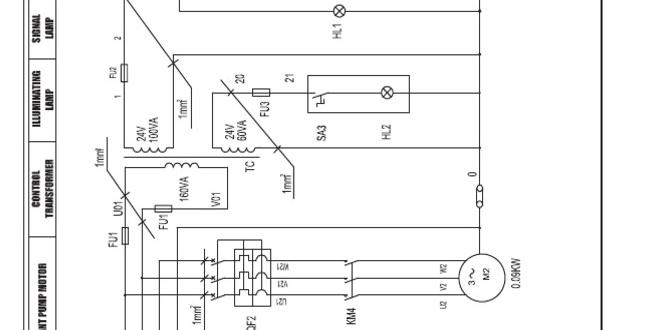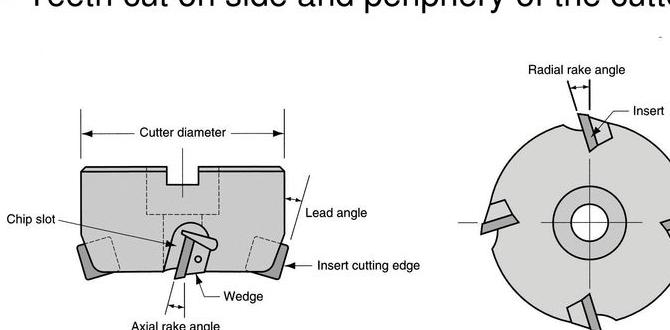Quick Summary: A 1/8 inch carbide end mill is an excellent choice for machining aluminum, especially 6061. Its sharp edges and hardness create clean cuts, while proper speeds and feeds ensure good chip evacuation. Choose standard length for general aluminum milling tasks.
Hey everyone, Daniel Bates here from Lathe Hub! Ever stared at a block of aluminum, ready to turn it into something amazing, only to feel a little lost about the right tool to use? You’re not alone. Aluminum can be a joy to machine, but using the wrong end mill can lead to frustrating “gumming up,” poor surface finishes, or even broken tools. The good news is, a little knowledge goes a long way. Today, we’re going to dive into one of the most versatile little tools you can have in your workshop: the humble 1/8 inch carbide end mill. We’ll explore why it’s a champion for aluminum, especially popular alloys like 6061, and how to make it sing. Get ready to mill aluminum with confidence!
Why a 1/8 Inch Carbide End Mill is Your Aluminum Best Friend
When you’re starting out, or even when you’re an experienced hand looking for efficiency, choosing the right cutting tool is paramount. For aluminum, and specifically for those intricate cuts or smaller projects, a 1/8 inch carbide end mill often hits the sweet spot. Let’s break down why and what makes it so effective.
Carbide vs. High-Speed Steel (HSS) for Aluminum
You’ll encounter both High-Speed Steel (HSS) and carbide end mills. While HSS is a reliable workhorse for many materials, carbide truly shines when it comes to aluminum, and here’s why:
- Hardness and Heat Resistance: Carbide is significantly harder and can withstand higher temperatures than HSS. Aluminum tends to be “gummy” and can load up a cutting edge, generating heat. Carbide’s superior heat resistance helps maintain its sharpness and reduces the risk of the aluminum welding onto the tool.
- Edge Retention: Because of its hardness, carbide holds an edge much longer than HSS. This means more consistent cutting performance over time and fewer tool changes, which is a big win for productivity.
- Cutting Speed: Carbide allows for higher cutting speeds. This translates to faster material removal rates, meaning you can get your parts done quicker.
The Magic of the 1/8 Inch Size
So, why specifically 1/8 inch? This size offers a fantastic balance for many common tasks:
- Detail Work: A 1/8 inch end mill is perfect for creating fine details, small pockets, intricate profiles, and shallow slots that larger tools simply can’t achieve.
- Accessibility: It can reach into tighter corners and spaces on a workpiece.
- Material Removal Rate (MRR): While not the fastest for hogging out large amounts of material, it’s incredibly efficient for its size. When paired with the right speeds and feeds, it can remove aluminum effectively without bogging down your machine or generating excessive heat.
- Machine Compatibility: It’s a manageable size for typical hobbyist or small shop milling machines where spindle torque or rigidity might be less than industrial giants.
Understanding the “1/4 Shank” Specification
When you see “1/8 inch” end mill, you’ll often also see a “1/4 shank.” This tells you two things: the cutting diameter (1/8 inch) and the diameter of the tool shank (1/4 inch) that goes into your collet or tool holder. A 1/4 inch shank is a very common size, ensuring it will fit a wide range of milling machine collet systems.
“Standard Length” Considerations
For general aluminum milling, a “standard length” 1/8 inch carbide end mill is usually sufficient. These offer a good balance between reach and rigidity. For very deep pockets, you might need an “extended reach” or “extra long” end mill, but for most common tasks, standard is the way to go. A shorter tool is generally more rigid, which is always a good thing for surface finish and tool life.
Deep Dive: Milling Aluminum 6061
Aluminum alloy 6061 is arguably the most popular aluminum alloy for machining. It’s strong, weldable, corrosion-resistant, and relatively easy to work with. However, it can still present challenges like chip welding if not machined correctly. This is where your 1/8 inch carbide end mill and the right settings become crucial.
Key Considerations for 6061 Aluminum
- Chip Evacuation: This is the single most important factor for success when milling gummy materials like aluminum. If chips aren’t cleared from the cutting zone, they weld to the tool. This leads to poor surface finish, increased cutting forces, and tool breakage. Your 1/8 inch end mill needs to be paired with settings and machine capabilities that promote good chip out.
- Sharpness: Even though carbide is hard, a dull edge will still perform poorly. Ensure your end mill is sharp.
- Lubrication/Coolant: While some machinists run aluminum dry, using a cutting fluid or lubricant significantly improves chip evacuation, reduces heat, and enhances surface finish.
Generous Flute Count for Aluminum?
When milling aluminum, you’ll often see recommendations for end mills with fewer flutes. For a 1/8 inch end mill:
- 2-Flute: This is often the go-to for aluminum. The larger chip gullet (the space between flutes) allows for better chip clearance. This is vital for preventing chip packing and welding common with softer, gummier metals.
- 3-Flute: A 3-flute can also work well, offering a slightly better surface finish due to more cutting edges engaging the material, but you must be more diligent with chip evacuation. It’s a good compromise if you want a bit of both worlds.
- 4-Flute (or more): Generally less ideal for softer aluminum. The smaller chip gullets increase the risk of chip packing.
For a 1/8 inch calculator carbide end mill for aluminum, especially 6061, a 2-flute design is usually your safest and most effective bet for beginners.
Setting Up for Success: Speeds, Feeds, and Cutting Strategies
This is where theory meets practice. Getting your spindle speed (RPM) and feed rate (how fast the tool moves through the material) right is critical. For a 1/8 inch carbide end mill in 6061 aluminum, here’s a general guideline:
Understanding Surface Speed (SFM)
Machining data is often expressed in Surface Feet per Minute (SFM). This is the speed at which the cutting edge of the tool is moving across the material. For carbide end mills in aluminum, SFM values can vary, but a good starting point is typically between 300-600 SFM.
Calculating RPM
You can use a simple formula to convert SFM to RPM, given your end mill diameter:
RPM = (SFM 3.82) / Diameter (in inches)
Let’s plug in some numbers for our 1/8 inch (0.125 inch) carbide end mill:
- At 300 SFM: RPM = (300 3.82) / 0.125 = 9,168 RPM
- At 500 SFM: RPM = (500 3.82) / 0.125 = 15,280 RPM
These numbers highlight why using a machine with a decent RPM range is beneficial for smaller carbide cutters. However, don’t get discouraged if your machine has lower RPMs. You’d just adjust your SFM down accordingly.
Calculating Feed Rate (IPM – Inches Per Minute)
Feed rate is just as important as RPM. It’s often expressed as Inches Per Tooth (IPT) or Inches Per Minute (IPM). A good IPT for a 1/8 inch carbide end mill in aluminum is often between 0.001 to 0.002 inches per tooth.
Feed Rate (IPM) = IPT Number of Flutes RPM
Let’s assume a constant RPM of 10,000 for simplicity with an 8,000-10,000 RPM machine:
- Using a 2-flute end mill at 0.0015 IPT: IPM = 0.0015 2 10,000 = 30 IPM
- Using a 2-flute end mill at 0.002 IPT: IPM = 0.002 2 * 10,000 = 40 IPM
A feed rate of 30-50 IPM is a very common and effective range for a 1/8 inch carbide end mill in aluminum.
Table: Recommended Starting Speeds and Feeds (1/8″ Carbide End Mill, 6061 Aluminum)
| Parameter | Value (Approximate Starting Point) | Notes |
|---|---|---|
| End Mill Type | 1/8″ 2-Flute Carbide (Bright Finish or AlTiN Coated) | 2-flute is ideal for chip clearance. Bright finish is common; AlTiN coating can help with lubricity. |
| Cutting Diameter | 0.125″ | |
| Shank Diameter | 0.250″ (1/4″) | |
| Material | 6061 Aluminum | Commonly annealed or T6 temper. |
| Spindle Speed (RPM) | 8,000 – 15,000 RPM | Higher RPM is generally better for smaller carbide tools in aluminum. Adjust based on machine capability and audible cues. |
| Feed Rate Per Tooth (IPT) | 0.001″ – 0.002″ | Start conservatively and adjust. Smaller values for harder aluminum or less rigid setups. |
| Feed Rate (IPM) | 16 – 60 IPM | (Calculated based on RPM and IPT. For 10,000 RPM, 2 flutes: 0.001 IPT = 20 IPM, 0.002 IPT = 40 IPM) |
| Depth of Cut (Axial DOC) | 0.010″ – 0.050″ | Shallower DOC is critical for rigidity and chip evacuation. |
| Width of Cut (Radial WOC) | 0.010″ – 0.125″ (10% – 100%) | Up to 100% WOC is possible in lighter cuts. For heavy cuts, consider step-overs (e.g., 30-50%). |
| Coolant/Lubrication | Recommended | Mist coolant, flood coolant, or a good cutting fluid. Crucial for chip flow. |
| Tool Path Strategy | Climb Milling (Conventional Milling Option) | Climb milling generally produces better surface finish and chip control in aluminum. |
Important Notes on Speeds & Feeds:
- Start Conservatively: Always start with the lower end of the recommended ranges. Listen to your machine and observe the chips.
- Listen to Your Machine: A “screaming” sound often indicates the tool is rubbing, not cutting effectively. A “chatter” sound means vibration. Adjust RPM or feed rate to find a smooth cutting sound.
- Observe the Chips: For aluminum, you want clean, thin, curly chips. If they are large, clumpy, or hot to the touch, you need to increase your feed rate, decrease your depth of cut, or improve chip evacuation/lubrication. If chips are dust-like, you might be feeding too slowly or have too much RPM.
- Rigidity is Key: The rigidity of your machine, the setup (how well the workpiece is held), and the tool holder all play a massive role. A less rigid setup will require slower speeds and shallower cuts.
- Coolant/Lubrication: For aluminum with a 1/8 inch end mill, a mist coolant or a light spray of cutting fluid can make a world of difference. It lubricates, cools, and helps blow chips away. For detailed information on cutting fluids, I recommend checking out resources from organizations like the Precision Metalforming Association (PMA).
Milling Strategies: Climb Milling vs. Conventional Milling
For aluminum, climb milling is generally preferred when using a CNC or manual milling with power feed.
- Climb Milling: The cutter rotates in the same direction as the feed movement. The chip the tool removes gets thinner as it progresses through the cut. This results in less heat, a better surface finish, and significantly less tendency for the aluminum to “gum up” the cutting edge. You’ll often hear a more consistent, smooth cutting sound.
- Conventional Milling: The cutter rotates against the feed direction. The chip gets thicker as it leaves the material. This generates more heat and friction, and is more prone to chip welding in aluminum. It’s often used when a machine has backlash in its drive system that would cause problems with climb milling.
If you’re using a manual milling machine and feeding by hand, you’ll typically use conventional milling to feel the cut and control backlash. But if you have power feed or are using a CNC, always aim for climb milling with aluminum.
Choosing the Right 1/8 Inch Carbide End Mill
Not all 1/8 inch carbide end mills are created equal. Here are a few things to look for:
Material and Coating
- Carbide Grade: Most general-purpose carbide end mills are made from Tungsten Carbide. For aluminum, you want a fine-grain carbide for better edge strength and finish.
- Coating:
- Bright Finish (Uncoated): These are very common and work perfectly well for aluminum. The polished flutes help with chip evacuation.
- TiN (Titanium Nitride): A golden coating, offering some hardness and lubricity. Good for various materials.
- AlTiN (Aluminum Titanium Nitride): This is a fantastic coating for aluminum. It’s harder than TiN and provides excellent lubricity, reducing friction and preventing chip welding. It often has a dark, purplish-black appearance.
- ZrN (Zirconium Nitride): Another good option for aluminum, offering good lubricity and a yellowish tint.
For a 1/8 inch end mill specifically for aluminum, an AlTiN or ZrN coated end mill can offer superior performance and tool life, but a good quality bright finish end mill will still perform admirably.
Flute Design
As discussed, 2-flute is generally ideal for aluminum due to chip clearance. Sometimes called “slotting” or “routing” end mills, they are designed for effective material removal with good chip evacuation.
End Shape
- Square End: The most common type. Creates sharp internal corners.
- Ball End: Creates rounded internal corners and is used for contouring and 3D machining.
- Corner Radius End: A variation of the square end with a small radius in the corner. This strengthens the corner and helps avoid stress risers, which can be useful for preventing chipping in both the tool and the workpiece. For general milling, a square end is fine.
For precise cuts and sharp internal corners, a 1/8 inch 2-flute carbide square end mill is your best bet for aluminum.
Common Problems and How to Fix Them
Even with the right tool, you might run into snags. Here’s how to troubleshoot.
Problem 1: Aluminum “Gums Up” the End Mill
- Description: Soft aluminum sticks to the cutting edges, filling the flutes and making the tool ineffective, leading to poor finish and increased cutting forces.
- Causes: Too slow of a feed rate, too slow of a spindle speed, insufficient chip evacuation, lack of lubrication/coolant, dull tool, cutting too shallow.
- Solutions:
- Increase Feed Rate: This
- Increase Feed Rate: This








